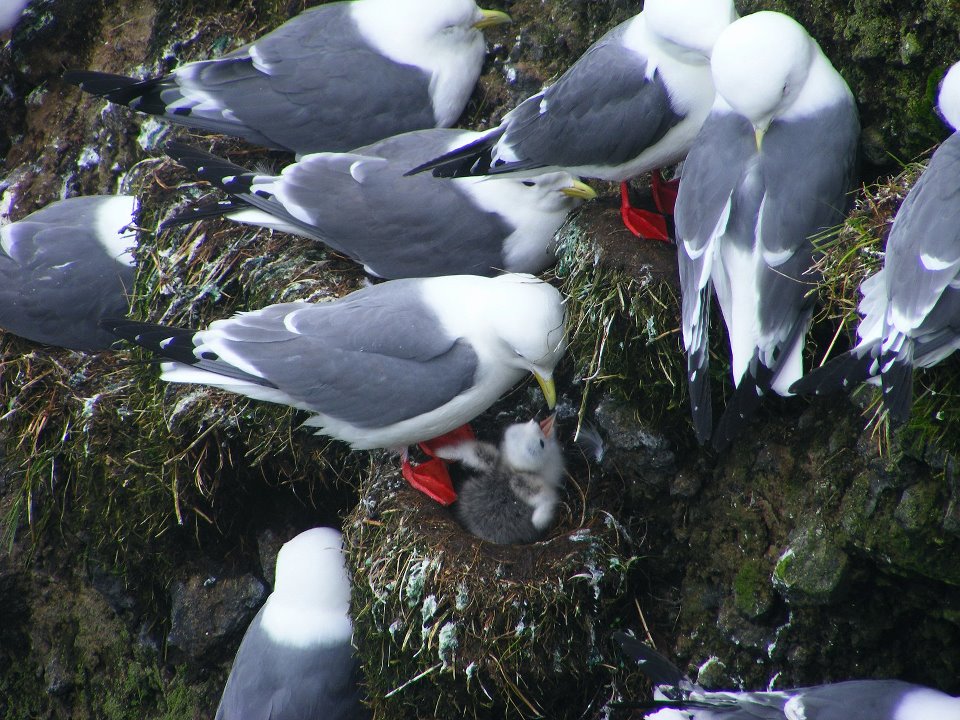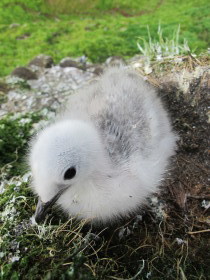Red-legged kittiwake photo (above) by Caitlin Kroeger
There are two species of kittiwake, the black-legged kittiwake (Rissa tridactyla) and the red-legged kittiwake (Rissa brevirostris).
The red-legged kittiwake is a small cliff-nesting gull that is endemic (restricted) to the Bering Sea. This species breeds on only a few islands in the Bering Sea, including the Pribilof Islands (St. Paul and St. George), Bogoslof Island, Buldir Island, and the Commander Islands in Russia.
The largest numbers of red-legged kittiwakes are found on St George Island, where 70-80% of the world’s population breed.
Red-legged kittiwakes build their nest on small ledges that are typically too small for black-legged kittiwakes to use. They lay a single egg during early June, and eggs are incubated for about 30 days. Both parents take turns incubating the egg and feeding the chick, and the chick fledges (flies from the nest) when it is about 37 days old.
Red-legged kittiwakes feed by plunging into the water or paddling around on the surface and dipping their head underwater to catch fish and invertebrates. Instead of carrying whole prey items back to their chick (like puffins) kittiwake parents regurgitate food (from their stomach) for their chick.
Red-legged kittiwakes have larger eyes than black-legged kittiwakes, and this is thought to help them find food at night and during dusk/dawn when light levels are low.
Red-legged kittiwake vs. Black-legged kittiwakes
Bering Sea endemic Circumpolar breeding distribution
Smaller body size Larger body size
Bigger eyes Smaller eyes
Shorter bill Longer bill
Specializes on myctophids (lantern fish) Generalist predator
Red legs! Black legs
Red-legged kittiwake chick, photo by John Harley
Red-legged kittiwakes spend most of their life at sea, and there is still soo much that we don’t know about these birds. That is why it is so exciting to be able to track these birds with GPS data-loggers.
QUESTIONS for YOU
1) Why do you think red-legged kittiwakes have Red Legs?
2) Why do you think red-legged kittiwakes are found on a few islands in the Bering Sea, whereas black-legged kittiwakes are found all over the northern hemisphere… including England, Canada, Greenland, and Iceland?
3) Why would red-legged kittiwakes have a shorter bill than black-legged kittiwakes?
4) What questions would YOU like to find out about red-legged kittiwakes?
Some of these answers are known, others are not. The first step of being a good scientist is to question what you see and hear, and then come up with some possible explanations to explore and test.
SEND YOUR ANSWERS AND IDEAS TO: seabirdyouth@gmail.com


